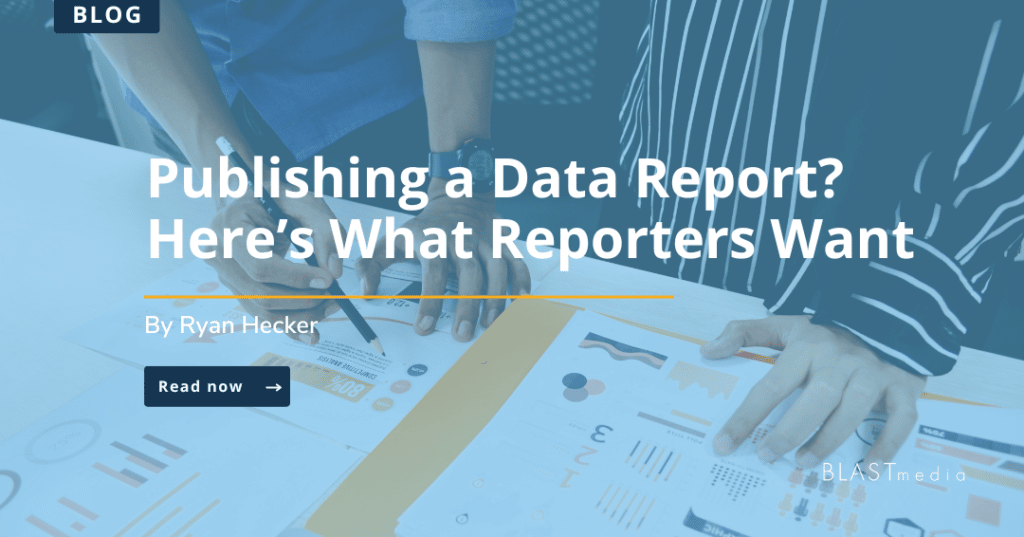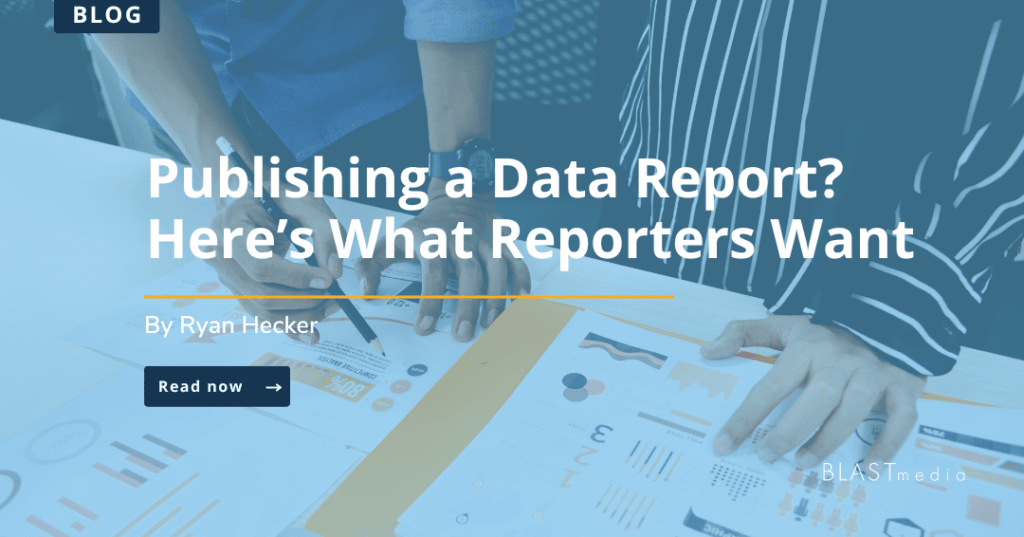
At PANBlast, our three-pronged approach to securing Tier-1 media includes customer participation, bold or vulnerable executive commentary, and compelling data.
Why data? Reporters seek data to validate claims with concrete evidence, and it also helps PR professionals deliver intriguing angles and stories backed by numbers.
Often, data is packaged up by SaaS brands in the form of reports, surveys or “state of” industry benchmarks. When it comes to a data report, it’s not enough to gather data and publish it if you are looking for media attention.
Below are keys to seeing your data published in the press:
Vanilla won’t cut it
When prepping the corresponding commentary to contextualize the report, you must be bold above all else (and offering a contrarian point of view doesn’t hurt, either). Reporters aren’t interested in commentary regurgitating information already out in the media. You don’t see quotes from respected industry experts like “companies are adopting more technology,” do you? Obviously not. It’s been said a million times.
Thought leadership quotes and angles that work well to position the data excite those in the industry, go against common perception or add a new perspective to an ongoing trend. To garner interest, data must tell a compelling story, challenge the status quo or tie back to relevant news. Data can support a thesis and be the story if you ask the right questions.
When drafting questions for a survey or pulling platform data for your report, it’s often best to work backward. Find the story or trend first, and then try and gather information to support or refute it.
- Companies aren’t adapting technology at the rate you thought.
- Marketers actually don’t prefer automation tools.
- The bigger your tech stack, the higher your revenue.
These bullet points would make for a better story than “companies are adopting more technology.” And you can find similar data points to build a compelling angle.
Statistically significant
One of the most common pieces of feedback we get from reporters when pitching data is, “This isn’t statistically significant.” In other words, the reporter needs more respondents to use this information.
Creating a compelling data report takes many resources, including time, energy and budget. As a result, you want to get the most out of it. Don’t take shortcuts with your respondent pool. Finding people that fit your target audience for the report (e.g., the correct title or age group) and finding enough of them is the first step to ensuring media members don’t turn a blind eye when they open your email.
The best case scenario when preparing a survey is 500+ respondents, but we also know getting that many isn’t always reasonable. Based on industry and media feedback, we recommend gathering responses from at least 200 respondents to fulfill the PR statistically significant requirement. Anything lower than that, you may not see the coverage or results you want.
Getting creative with PR outreach
When gearing up to begin data outreach, you must set expectations and goals and execute a well-thought-out plan with your PR team — know your strategy.
- Will an exclusive be offered?
- Can the data be parsed to appeal to different verticals?
- Can the lifetime value be extended by attaching thought leadership angles?
These questions can help you form a SaaS PR strategy for success. Regarding coverage expectations, we see around ten total inclusions in the form of announcement coverage, press release postings and thought leadership coverage, depending on the type of report and vertical.
Also, get creative with outreach to achieve these goals. When most people think of data coverage, they assume mentions. Well, that may be your most common form of report coverage, but it’s not your only pathway to success. As I mentioned earlier, data can not only support a thesis but can also be the story. If you have the points to back it up, you can draft entire contributed content around specific data points. (Consider this example in Fortune from Upside CEO Alex Kinnier.) With Q4 predictions season in full swing, you can also include relevant data points in quotes to enhance thought leadership efforts.
Lastly, when putting together a media relations plan, know that data reports can have longer shelf lives than other initiatives, and coverage may not turn right away (but it doesn’t mean it won’t). For example, you can include data points in other story angles and contributed content over the next year. As a result, consider drafting goals with longer time ranges — and don’t limit yourself to the initial data report press release.
Data can be a strong tactic to garner coverage as long as you understand what makes data significant and unique. Otherwise, coverage may not be what you expect.
Looking to maximize coverage for your next data report? We can help! To learn more, contact our team.

